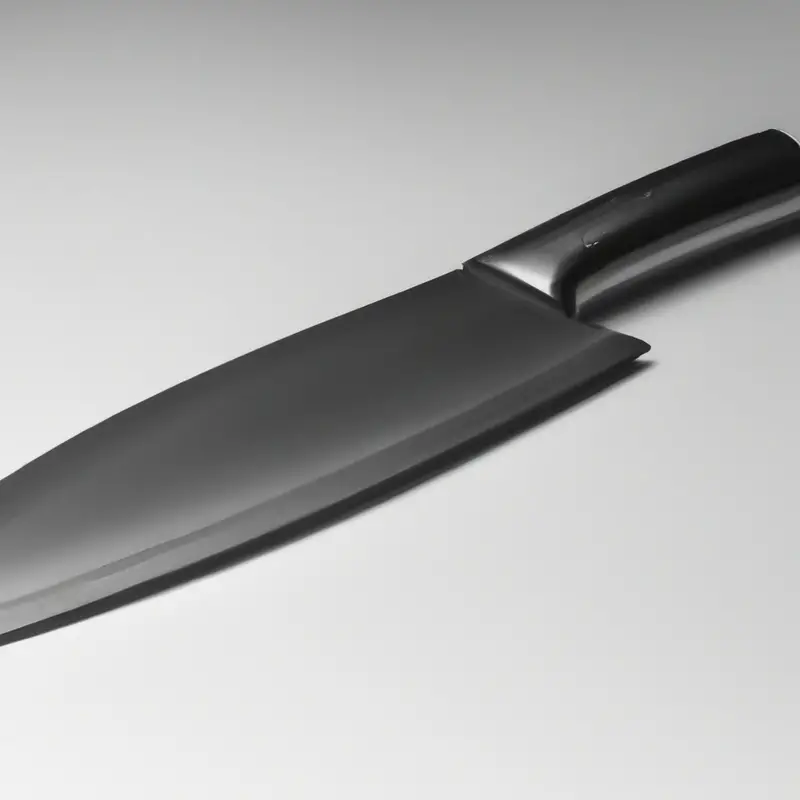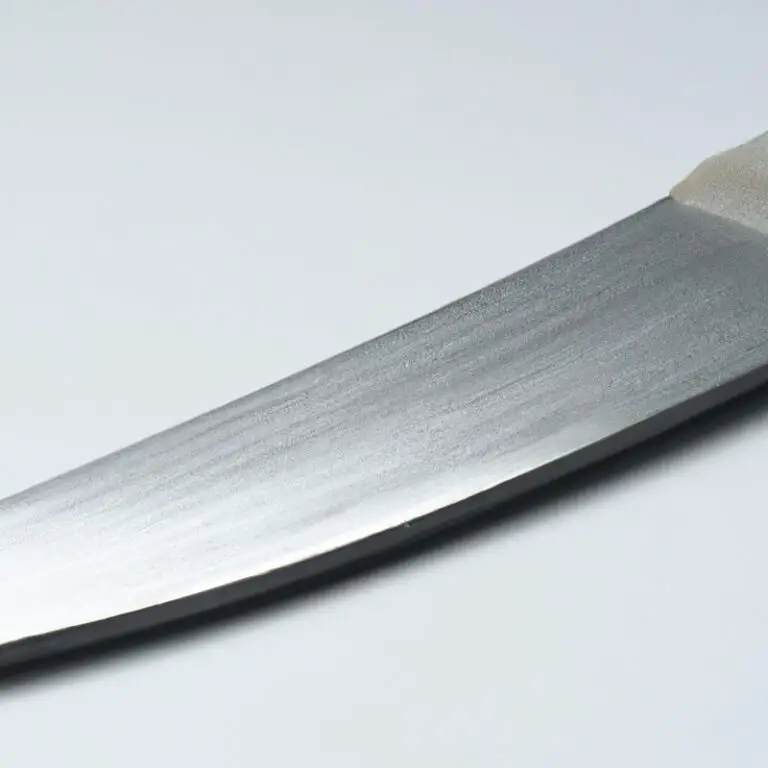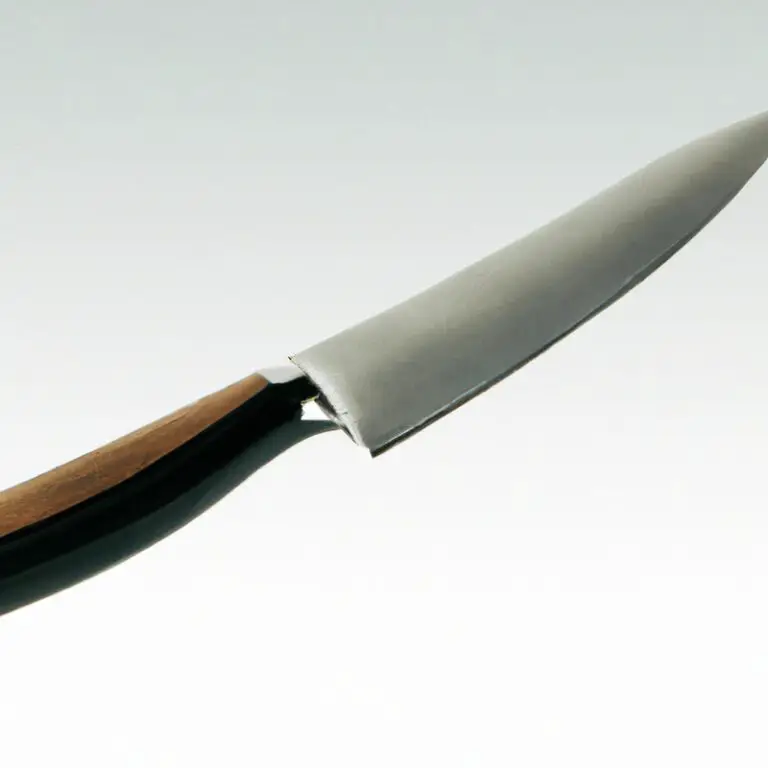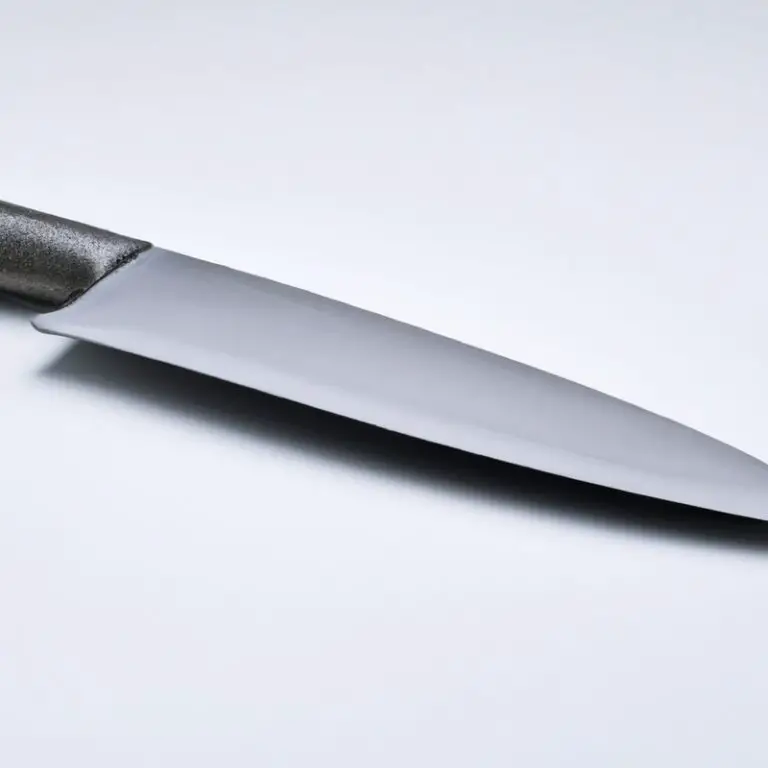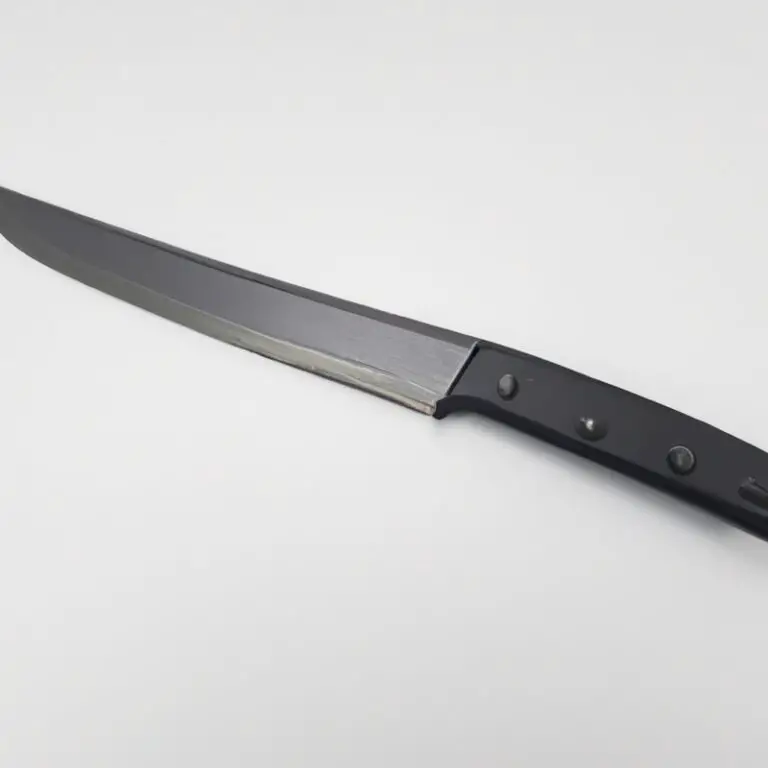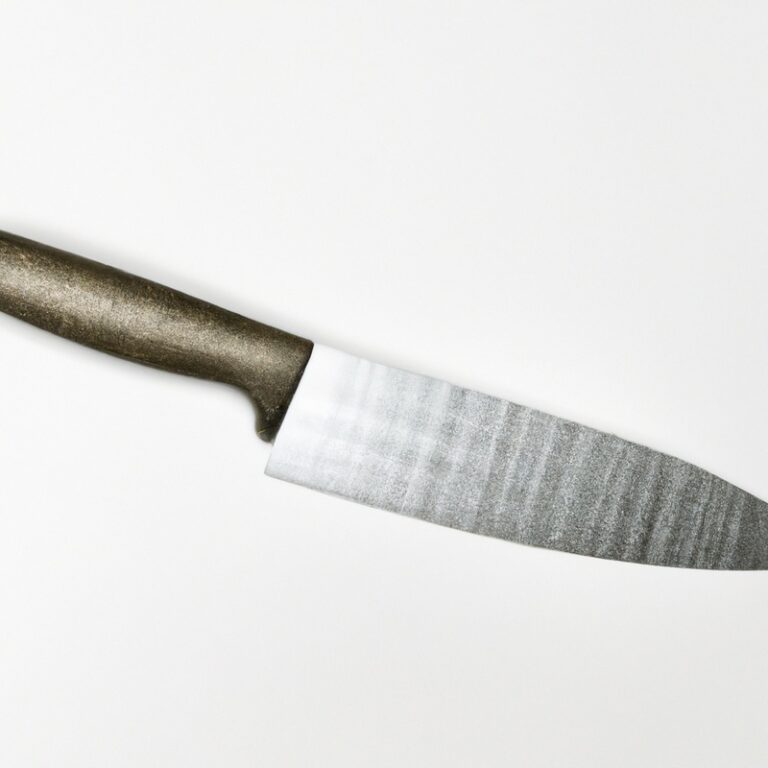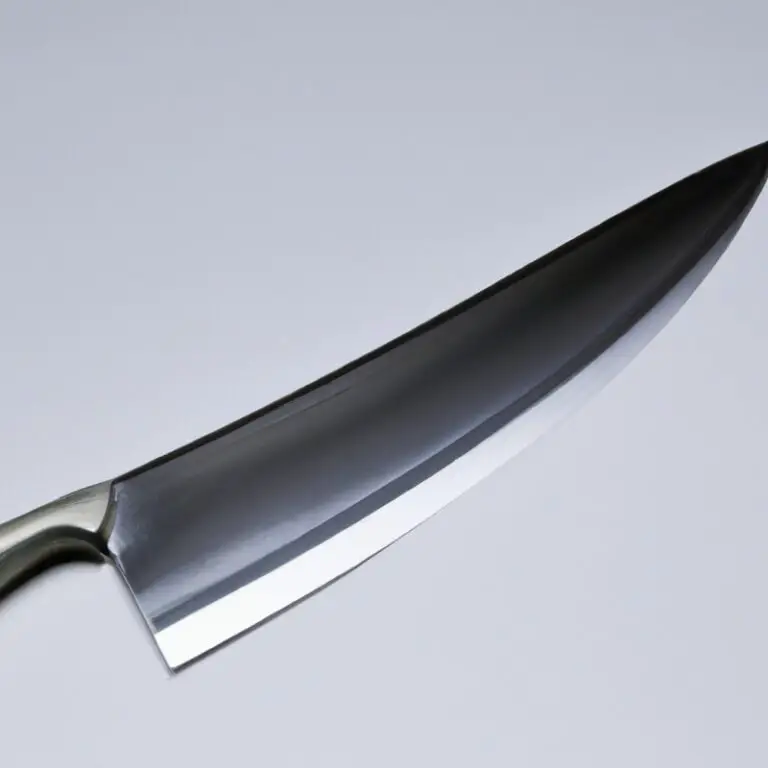How To Develop Knife Skills With a Gyuto Knife? Pro Tips
Key Takeaways:
- A Gyuto knife is a versatile tool that can help to improve your knife skills in the kitchen.
- To develop knife skills with a Gyuto knife, it’s important to focus on proper grip, technique, and posture.
- Practice is key to improving your knife skills with a Gyuto knife, so start with simple tasks like chopping vegetables and work your way up to more challenging cuts.
- A sharp Gyuto knife, coupled with the right skills, can make a significant difference in the quality and speed of your food preparation.
Have you ever struggled to chop, dice, or slice vegetables and meat with precision and speed? Are you tired of using blunt knives that squish food rather than cutting it?
Look no further than the Gyuto knife, a Japanese chef’s knife that can elevate your cooking game to a new level.
As someone who has perfected my knife skills, I can confidently say that the Gyuto knife is a worthy investment. In this article, I share tips on how to grip, choose, and maintain your Gyuto knife while mastering basic cutting techniques and developing speed and precision.
Say goodbye to dull knives and hello to perfectly sliced ingredients with the Gyuto.
| Step | Description |
|---|---|
| Step 1 | Select a high-quality Gyuto knife that fits comfortably in your hand and has a sharp blade. |
| Step 2 | Learn the proper way to hold and grip the Gyuto knife, ensuring that your thumb and index finger are capable of precise movements. |
| Step 3 | Practice basic knife skills, such as chopping, slicing, and dicing. Avoid using excessive force when cutting and let the knife do the work. |
| Step 4 | Practice honing and sharpening your Gyuto knife regularly to maintain its optimal sharpness. |
| Step 5 | Experiment with different cutting techniques, such as the claw grip and the rock chop, to find the most comfortable and efficient method for you. |
| Step 6 | Explore various ingredients and textures, such as vegetables, proteins, and grains, to challenge and improve your knife skills. |
| Step 7 | Take a course or workshop on knife skills to receive professional guidance and feedback on your technique. |
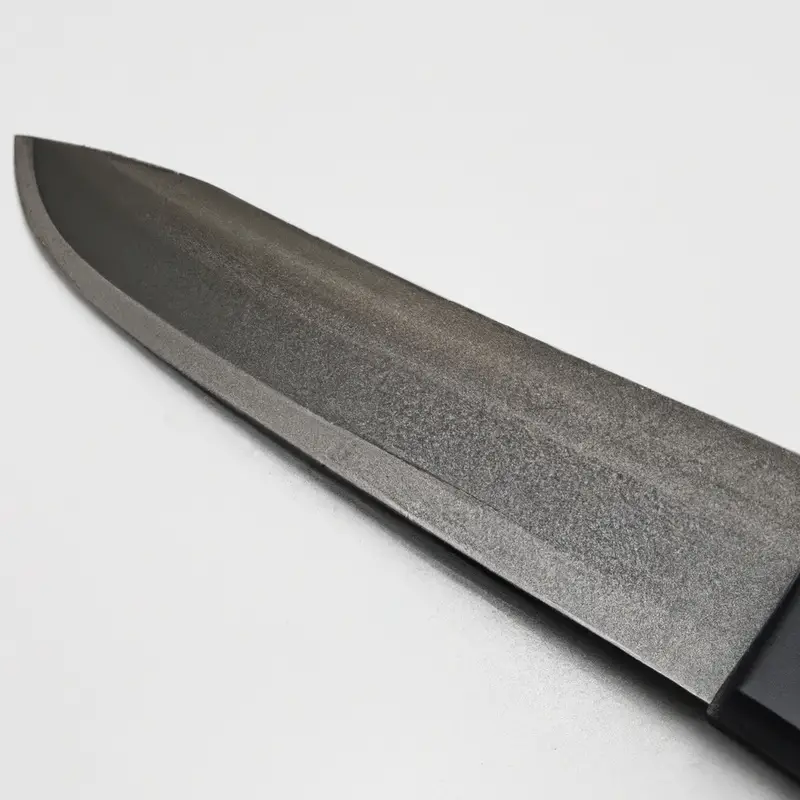
What is a Gyuto knife and why is it great for developing knife skills?
A Gyuto knife is a Japanese chef’s knife with a straight blade edge and a sharp tip. It is ideal for developing knife skills due to its thin and lightweight blade, making it easy to control while practicing precision cuts.
The wide blade also allows for the “rocking” motion commonly used in chopping, slicing, and dicing.
The sharpness of the blade allows for effortless and accurate cuts, making it perfect for developing your knife skills. Overall, the Gyuto knife is a versatile tool that can help you take your knife skills to the next level.
Understanding the different parts of a Gyuto knife for precise cuts
To achieve precise cuts with a Gyuto knife, it’s essential to understand the different parts of the blade. The tip of the knife is used for delicate tasks such as intricate cuts, while the middle section can make larger cuts.
The heel is best for tough tasks like breaking down cuts of meat, and the spine provides weight and balance to the knife.
The bolster, where the blade meets the handle, prevents your fingers from sliding down onto the blade during use. Understanding each section helps you achieve optimal results in your knife skills.
Choosing the right size and weight of Gyuto knife for your needs
Choosing the right size and weight of Gyuto knife is crucial for optimal control and comfort while using it. Gyuto knives come in various sizes ranging from 7 to 12 inches, and different weights, typically measured in grams.
For home cooks, a 8-10 inch Gyuto knife is suitable for most tasks, while professional chefs may opt for larger sizes.
The size of the knife depends on personal preference and the tasks you plan to use it for – larger knives are better for cutting larger items, while smaller knives offer better precision for smaller items. In terms of weight, a lighter Gyuto knife provides better control and is easier to maneuver around.
However, a heavier knife can help with tougher cuts and can do more of the work for you.
Again, personal preference and intended use should be taken into consideration when selecting the right weight. Ultimately, the right size and weight of Gyuto knife for your needs will depend on your comfort and intended use.
It’s always recommended to try out a few different sizes and weights before making a purchase to ensure you find the best fit for you.
How to properly grip a Gyuto knife for optimal control and safety
Properly gripping a Gyuto knife is essential for optimal control and safety. The grip should be firm, yet relaxed to avoid slippage and prevent injury.
To grip a Gyuto knife, start by placing your index finger and thumb on opposite sides of the blade’s base, known as the bolster.
Wrap the remaining fingers around the handle, making sure to keep them away from the blade’s edge. The grip should feel comfortable and balanced, with the blade in line with your forearm.
Avoid gripping the handle too tightly, as this can lead to tension and inaccurate cuts.
It’s important to maintain the grip throughout the cutting process, keeping the blade steady and using a rocking motion for precise cuts. Always cut away from your body and keep your other hand away from the blade’s path.
Practice the grip with a few simple cuts before moving on to more advanced techniques.
With time and patience, you’ll develop a natural and secure grip that will enhance your knife skills and enable you to create impressive dishes with your Gyuto knife.
Mastering basic cutting techniques with a Gyuto knife: dicing, slicing, and chopping
Mastering basic cutting techniques with a Gyuto knife is essential to becoming proficient in using this tool. Dicing involves cutting ingredients into small cubes, while slicing involves making even cuts through ingredients.
Chopping involves bigger, swift cuts through ingredients.
To dice, slice, and chop effectively, it is important to use the correct knife technique and hand placement. For dicing, start by cutting the ingredient into thin slices before cutting it into cubes.
Use a rocking motion with the knife to make even, controlled cuts.
For slicing, hold the ingredient securely with one hand while using the knife to make smooth, even cuts. For chopping, place the ingredient on the cutting surface and use a firm, swift motion to cut through it.
When practicing these techniques, it is important to maintain a comfortable grip on the knife to ensure optimal control and safety.
Avoid using too much force or applying pressure that could result in injury. With practice, mastering these basic cutting techniques with a Gyuto knife will allow you to prepare ingredients quickly and efficiently, allowing you to create impressive dishes with ease.
The importance of maintaining a sharp edge on your Gyuto knife for consistent, effortless cuts
Maintaining a sharp edge on your Gyuto knife is essential for achieving consistent, effortless cuts. A dull knife not only makes cutting more difficult but also increases the risk of injury.
When a knife is dull, it requires more force to cut through ingredients, which can lead to slips and inaccurate cuts.
A sharp Gyuto knife ensures precision and control, allowing for smooth, effortless cuts. It’s important to regularly sharpen and maintain the edge of your knife, using proper sharpening tools and techniques.
A well-maintained Gyuto knife will not only make cooking easier but also help to prolong the knife’s lifespan.
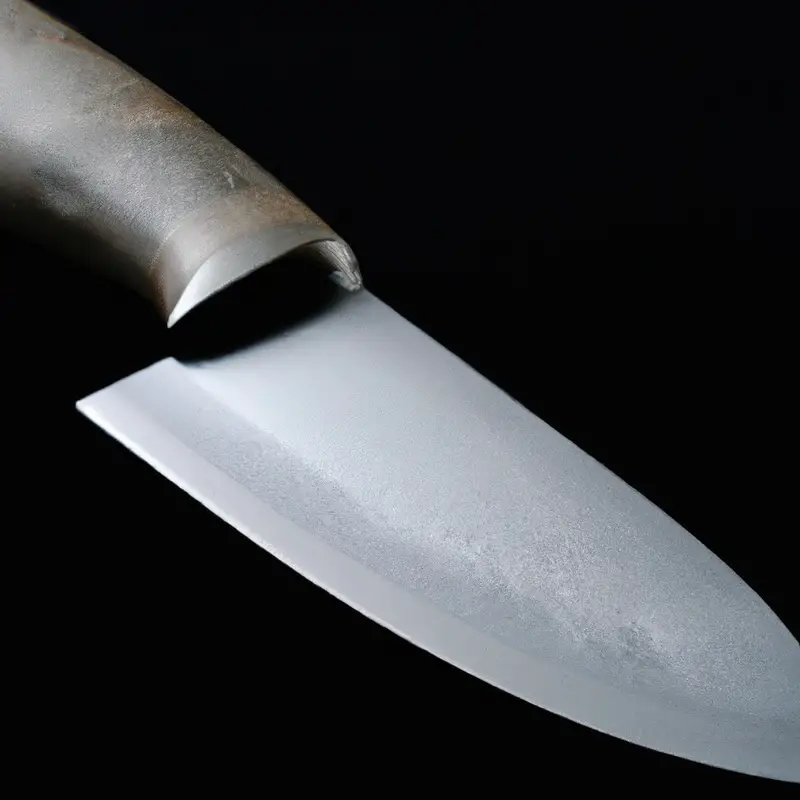
Overcoming common challenges when learning to develop knife skills with a Gyuto knife
Learning to develop knife skills with a Gyuto knife can be challenging, but with the proper techniques, anyone can become a skilled chef. One common challenge is getting used to the weight of the knife.
To overcome this, start with a lighter Gyuto knife and gradually work up to a heavier model.
Another challenge is gripping the knife properly. Make sure to hold the handle firmly and place your index finger on the top of the blade for better control.
Additionally, maintaining a consistent angle when slicing can be difficult.
Practice by cutting slowly and steadily, and focus on keeping the knife at a 15-20 degree angle. Finally, sharpening the Gyuto knife can be daunting, but using a honing steel before and after each use can help maintain a sharp edge.
With practice and patience, you can develop the skills needed to become a confident and skilled chef with your Gyuto knife.
Techniques for honing your knife skills with a Gyuto knife, including speed and precision drills
Techniques for honing your knife skills with a Gyuto knife include:
- Speed drills: These drills are important for developing your speed and efficiency while using the Gyuto knife. Start with simple exercises such as cutting vegetables into uniform sizes as quickly as possible.
- Precision drills: These drills are designed to help you master accuracy and precision with the Gyuto knife. Practice making thin, even cuts in vegetables or fruits.
- Fingertip control: In order to master finesse and control with your Gyuto knife, you need to focus on fingertip control. This technique involves using only the tips of your fingers to guide the knife’s edge, allowing for optimal control and precision.
- Counterbalance: In order to balance the weight of the knife, use your other hand to balance the opposite end of the blade. This will help you maintain control and stability while using the knife.
- Guided cuts: When making precise cuts, use your non-knife hand to guide the food towards the blade. This will help ensure accurate and uniform cuts.
By practicing these techniques regularly, you can improve your skills and become more proficient with your Gyuto knife.
Using your newly developed knife skills to create impressive dishes
With your newly developed knife skills, you can enhance your cooking game and create impressive dishes. From perfectly sliced vegetables to uniformly sized meats, your Gyuto knife skills can help elevate your dishes from ordinary to extraordinary.
Use your skills to create delicate cuts for garnishes, even slices for sushi, or finely diced herbs and aromatics for sauces.
By mastering basic cutting techniques such as slicing, dicing, and chopping, you can create a world of flavorful possibilities. Remember to keep your blade sharp for effortless cutting, and experiment with advanced knife skills to take your dishes to the next level.
With practice and patience, your Gyuto knife skills will undoubtedly help you create meals that are both aesthetically pleasing and delicious.
Maintenance and care for your Gyuto knife to keep it in optimal condition
To keep your Gyuto knife in optimal condition for longer years, it is essential to maintain and care for it properly. Here are some basic tips for keeping your Gyuto knife in top condition:
- Clean your knife after every use with warm, soapy water and a soft sponge. Never use abrasive cleaning materials or scourers that can damage the blade.
- Dry your knife immediately after cleaning to prevent rust and water stains from forming.
- Store your Gyuto knife in a sheath or knife block to protect the blade and prevent accidents.
- Use a honing rod to maintain the edge of your knife regularly. Sharpen the blade with a sharpening stone or get it professionally sharpened when needed.
- Never use your Gyuto knife for tasks that it isn’t designed for, such as prying open cans or cutting through frozen foods.
By following these simple maintenance and care tips, you can ensure that your Gyuto knife remains sharp and in optimal condition for years to come.
Final Verdict
Mastering knife skills is essential for any chef or home cook, and the Gyuto knife is an excellent tool for honing those skills. By understanding the different parts of the knife, choosing the appropriate size and weight, gripping the handle correctly, and practicing basic cutting techniques, anyone can improve their precision and safety in the kitchen.
Remember, a sharp edge is crucial for consistent and effortless cuts, and overcoming common challenges takes patience and practice.
With the right techniques and drills, anyone can improve their speed, accuracy, and creativity in the kitchen. By taking proper care of your Gyuto knife, it can be a trusted companion for years to come.
So, get into the kitchen, practice, and unleash your culinary passion with the powerful Gyuto knife.

